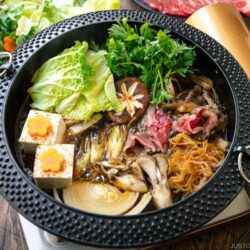
Sukiyaki
Cozy up at your next get-together with friends and family with my homemade Sukiyaki recipe. In this dish, we sear marbled beef and simmer it with tofu, mushrooms, and vegetables in a sweetened soy sauce. This family-style dinner will warm your stomachs and hearts with its authentic Japanese flavors.
Ingredients
For the Kombu Dashi (for diluting the cooking sauce; as needed)
- 2 cups water
- 1 piece kombu (dried kelp) (2 x 2 inches, 5 x 5 cm; 5 g per piece)
For the Sukiyaki
- 4 leaves napa cabbage (12 oz, 340 g)
- ¼ bunch shungiku (chrysanthemum greens) (3.5 oz, 100 g)
- 1 Tokyo negi (naga negi; long green onion) (white part only; or 1 leek/4 green onions)
- 6 inches gobo (burdock root) (1.6 oz, 45 g)
- ½ onion (3.5 oz, 100 g)
- ½ package enoki mushrooms (1.75 oz, 50 g; skip or use other mushrooms)
- ½ package maitake mushrooms (1.75 oz, 50 g; skip or use other mushrooms)
- 2 shiitake mushrooms (1.75 oz, 50 g; skip or use other mushrooms)
- ½ package broiled tofu (yaki dofu) (one package is 9 oz, 255 g; or use medium-firm (momen) tofu)
- 1½ inches carrot (optional, for decoration and color)
- ½ package shirataki noodles (3.5 oz, 100 g; or cellophane/yam noodles)
- ½ lb thinly sliced beef (such as ribeye) (or slice your own meat; skip for vegan/vegetarian and use more tofu, mushrooms, and vegetables)
- 1 Tbsp neutral oil (or 1 small piece of suet (raw beef fat))
For Serving
- 2 large eggs (50 g each w/o shell) (optional, for dipping; for safety, buy pasteurized eggs or make sous vide eggs; skip for vegan)
For the Shime Finishing Course
- 1 serving udon noodles (cooked and drained)
Instructions
To Make the Kombu Dashi and Sukiyaki Sauce
- Gather all the dashi and sauce ingredients. Tip: You‘ll use the dashi and sauce to adjust the seasoning of the broth as you cook. This recipe makes more dashi than you need for this dish and you‘ll likely have leftovers.
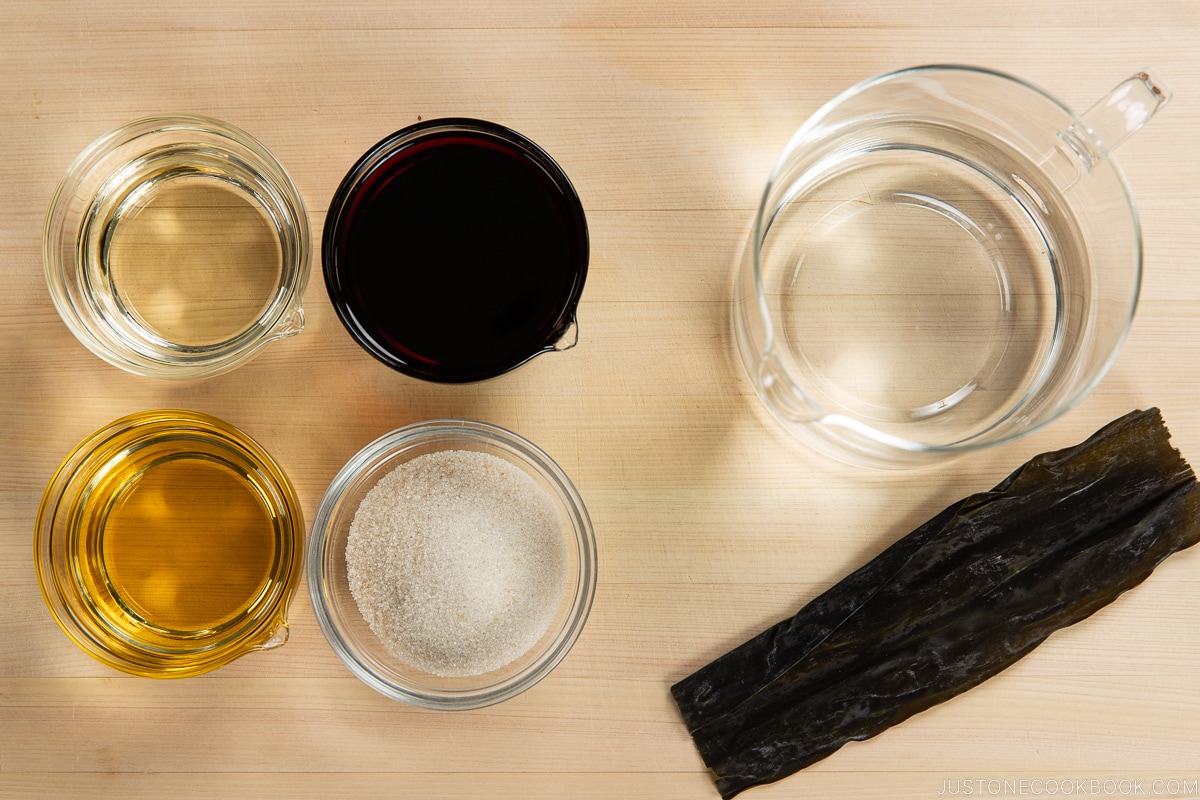
- To make the cold brew Kombu Dashi, put 2 cups water and 1 piece kombu (dried kelp) in a measuring cup or pitcher. Set it aside to steep for a minimum of 30 minutes, or make it ahead up to overnight.
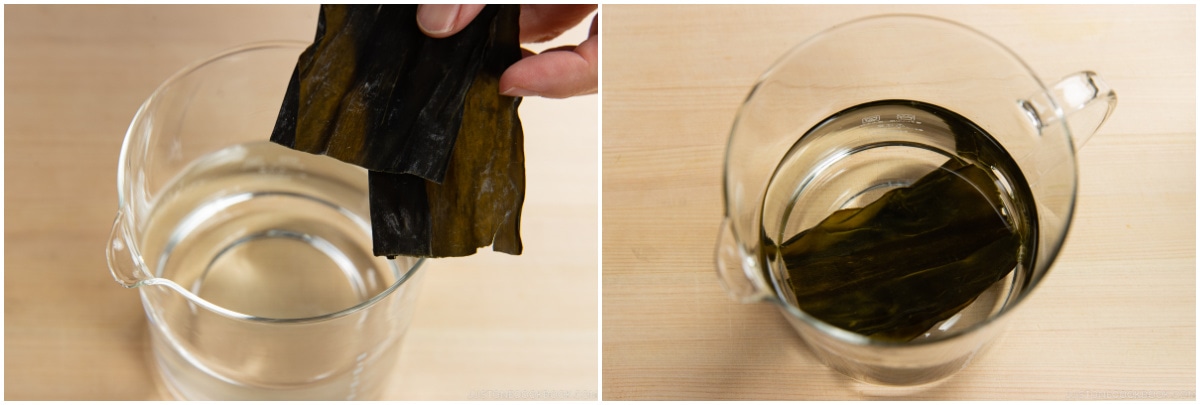
- To make the sukiyaki sauce, combine ½ cup sake and ½ cup mirin in a small saucepan. Bring it to a boil and reduce the heat to simmer and let the alcohol evaporate for a minute or so.
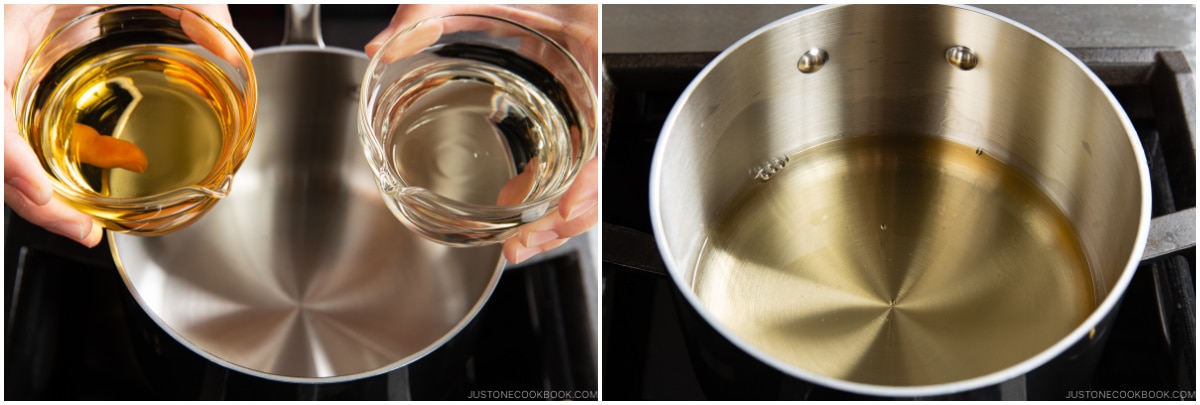
- Add 3 Tbsp sugar and ½ cup soy sauce and mix together. Bring it back to a boil. Once the sugar is completely dissolved, turn off the heat and set it aside.
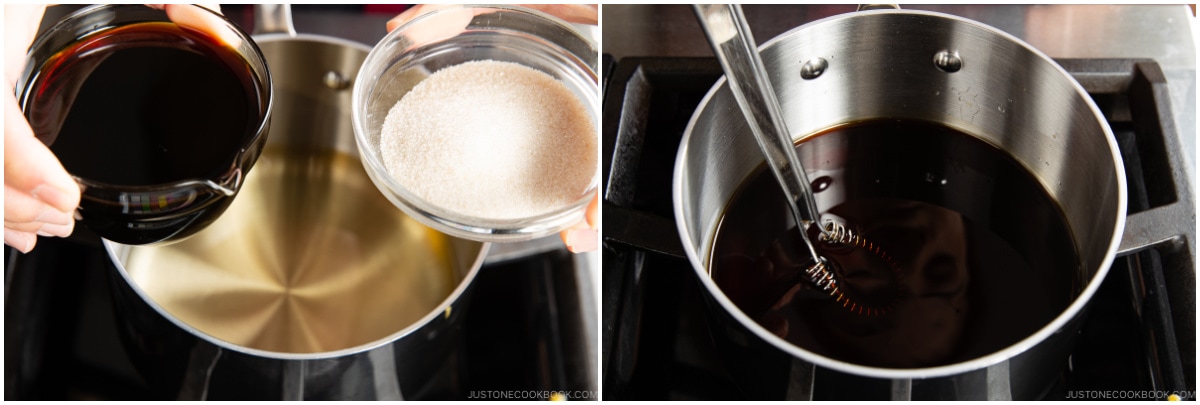
- Transfer the sauce to a pitcher and bring both the dashi and the sauce to the table. Tip: You can make the sukiyaki sauce ahead and store it in an airtight container in the refrigerator for up to a month.
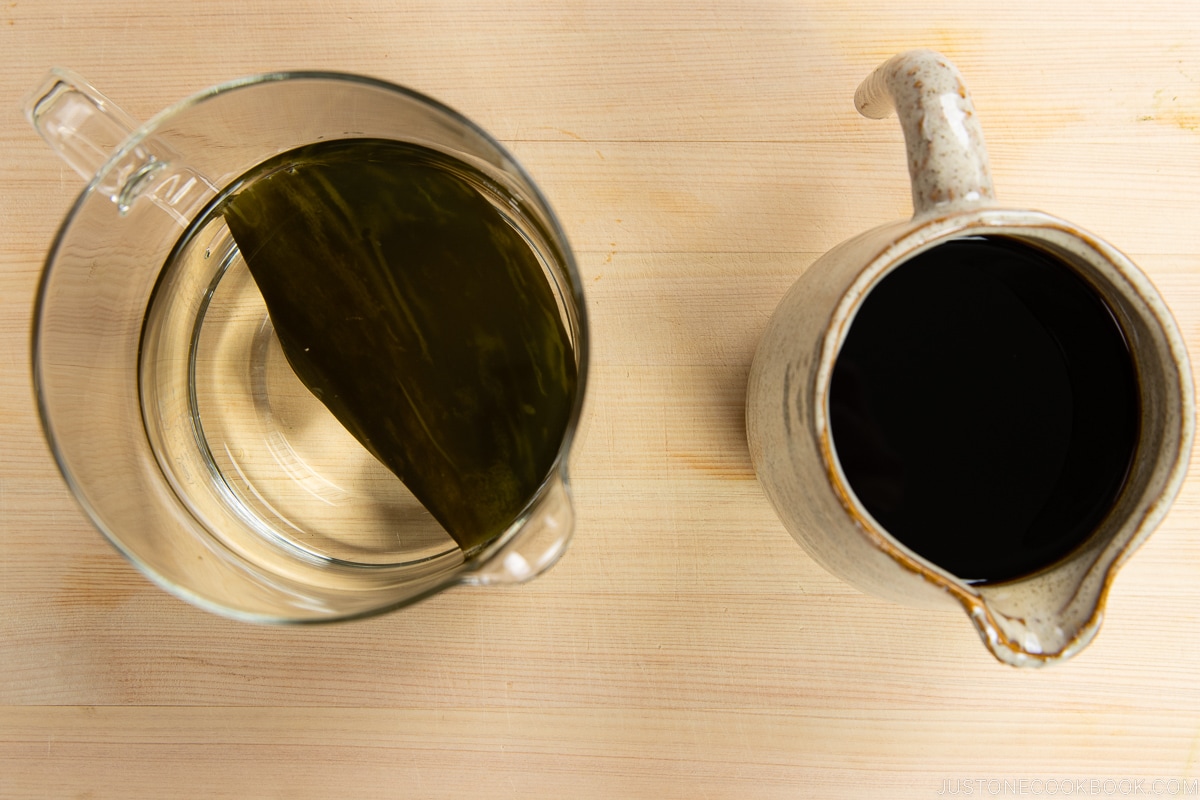
To Prepare the Sukiyaki Ingredients
- Gather all the sukiyaki ingredients. Feel free to customize the portions to suit your personal preference. Here, I used the entire package of grilled tofu (twice as much) since we love tofu.
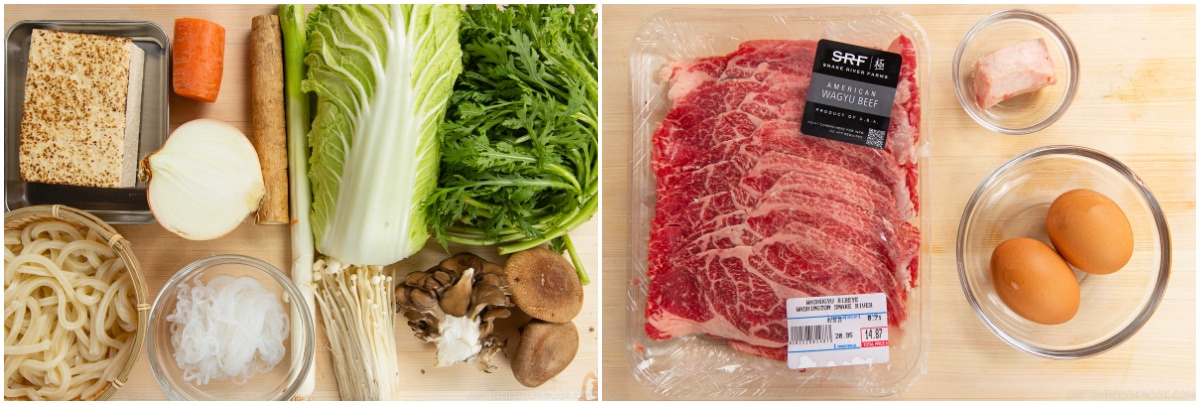
- Cut 4 leaves napa cabbage into pieces 2 inches (5 cm) wide.
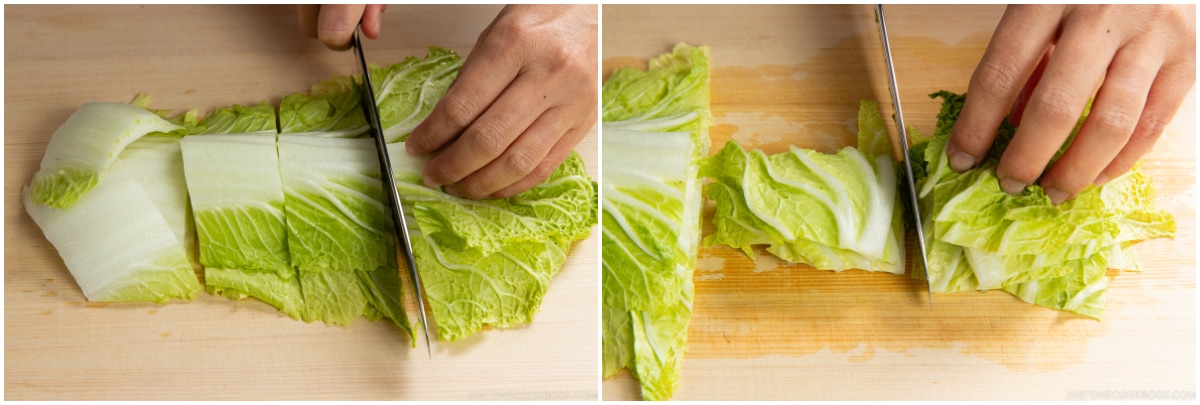
- Cut the pieces in half or thirds down along the thick white center of the leaves.
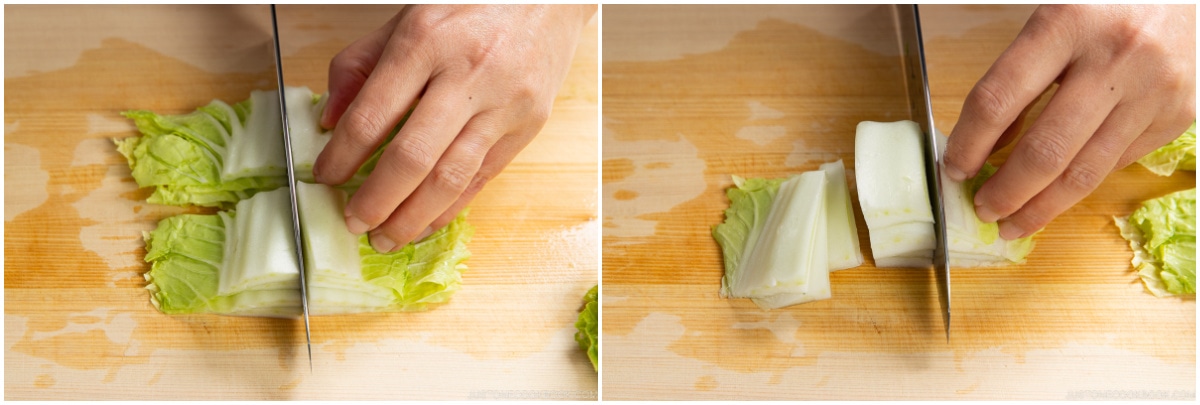
- Cut ¼ bunch shungiku (chrysanthemum greens) 2 inches (5 cm) wide.
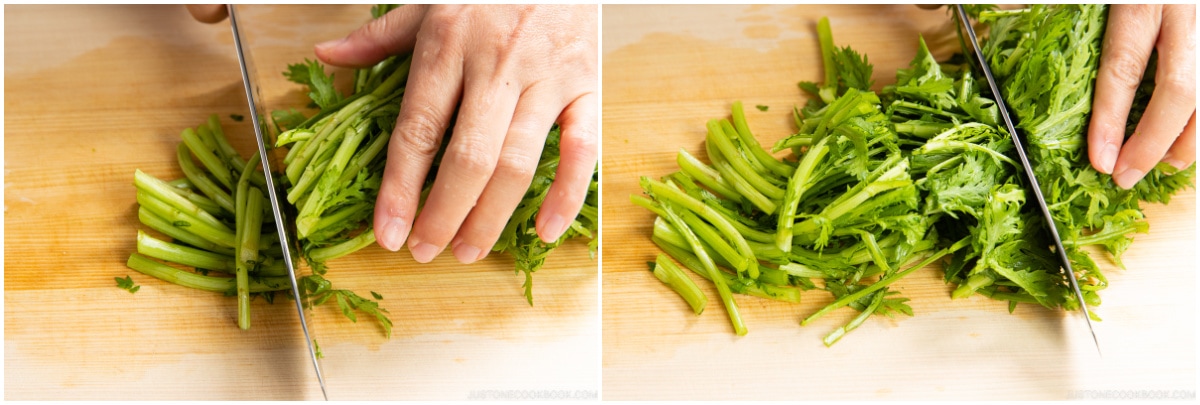
- Slice the white part of 1 Tokyo negi (naga negi; long green onion) diagonally into ½-inch (1.3 cm) pieces.
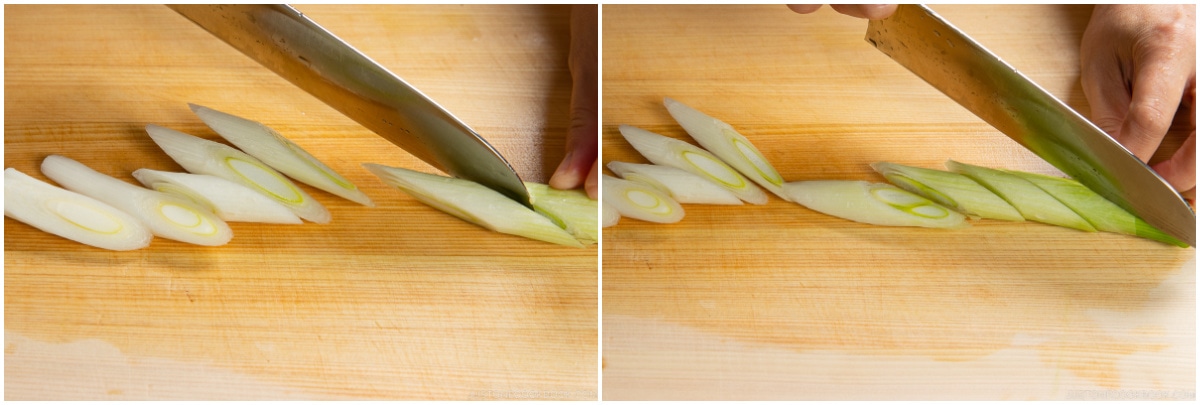
- Scrape off the outer skin of 6 inches gobo (burdock root) with the back of a knife. The gobo‘s flavor is just under the skin, so don‘t use a vegetable peeler and peel that flavor away. Once you scrape off the skin, shave the gobo into superthin strips using a vegetable peeler.
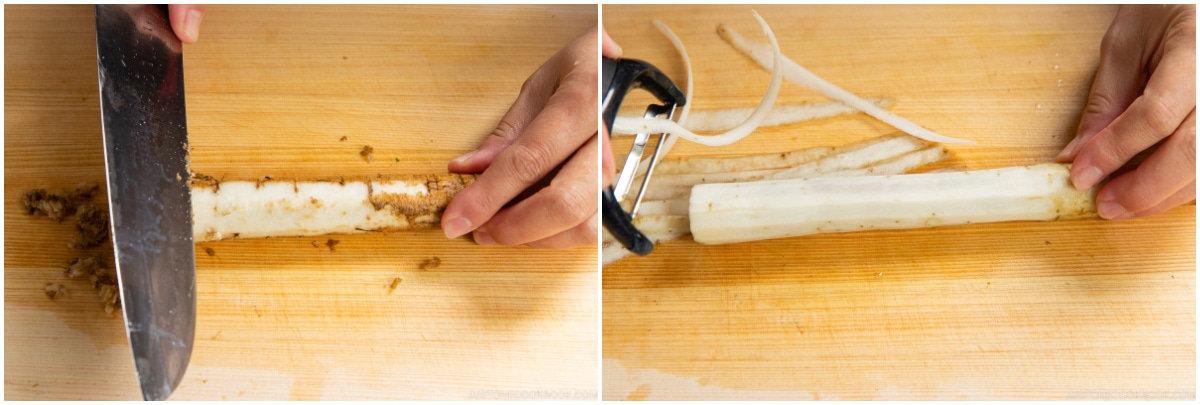
- Soak the gobo strips in water for 5 minutes, changing the water once. Drain well.
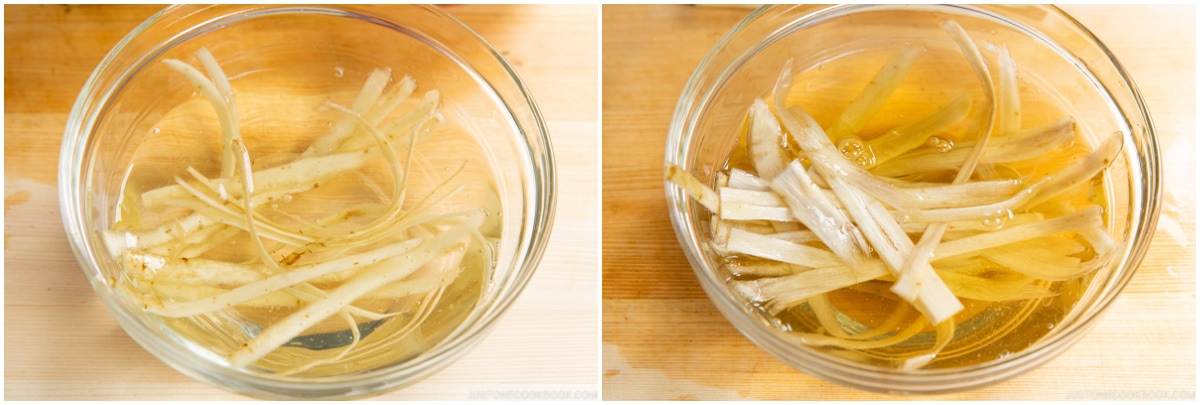
- Cut ½ onion into ½-inch (1.3 cm) slices widthwise. Next, discard the bottom part of ½ package enoki mushrooms and tear it into smaller clusters.
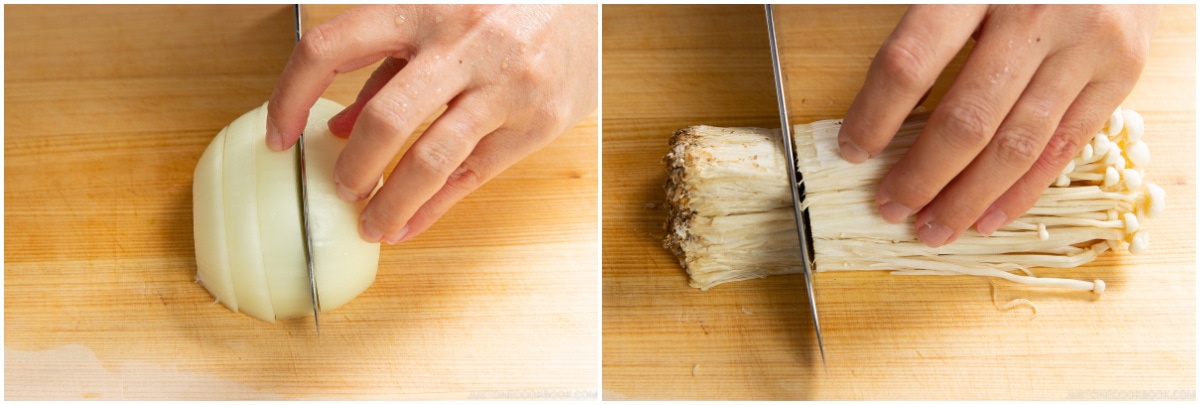
- Cut off and discard the root ends of ½ package maitake mushrooms and separate the maitake bunch into 2 small clusters.
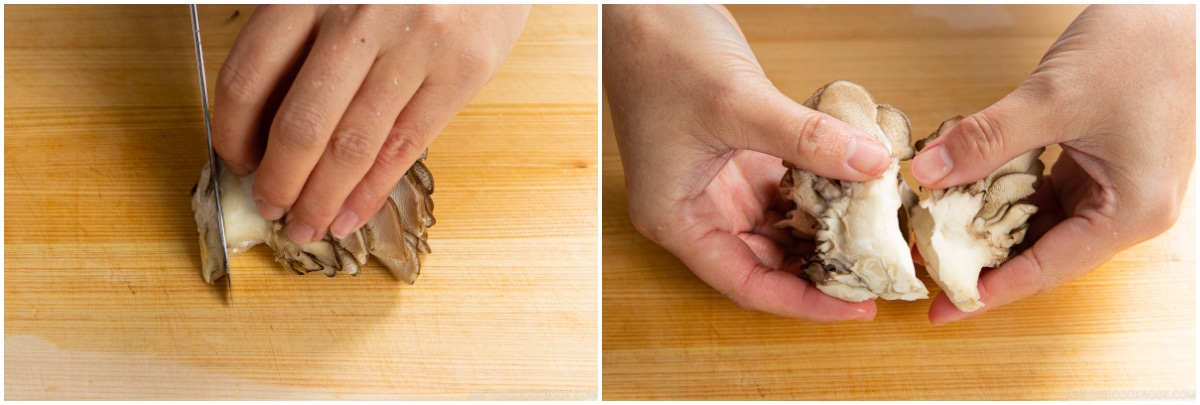
- Cut off and discard the stems of 2 shiitake mushrooms. Optionally, you can cut a flower pattern on the shiitake mushroom caps: First, cut a sliver off the top of the mushroom cap by making 2 incisions in the shape of a “V". Bevel these cuts toward each other by inserting the knife at an angle.
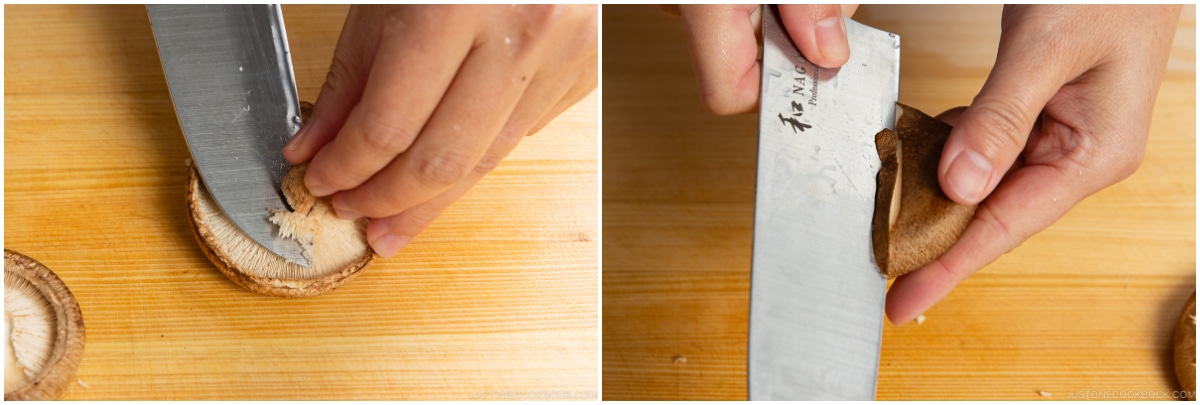
- Make a second cutout in the same manner to form an "X" with the first cutout. You can keep this "X" pattern or add one or two more cutouts. Watch my video on "shiitake hanagiri" that demonstrates this Japanese cutting technique.
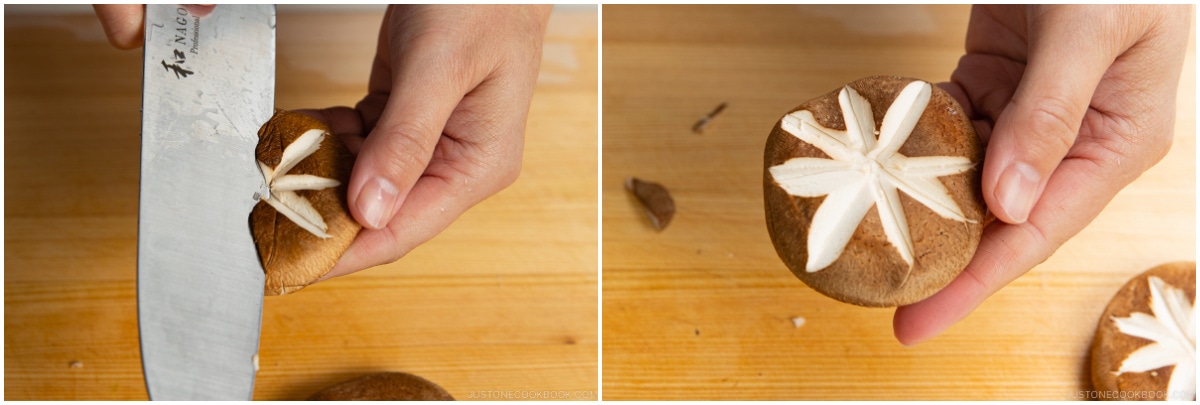
- Cut ½ package broiled tofu (yaki dofu) into smaller pieces. We usually double the tofu portion and cut one block into 6–8 pieces.
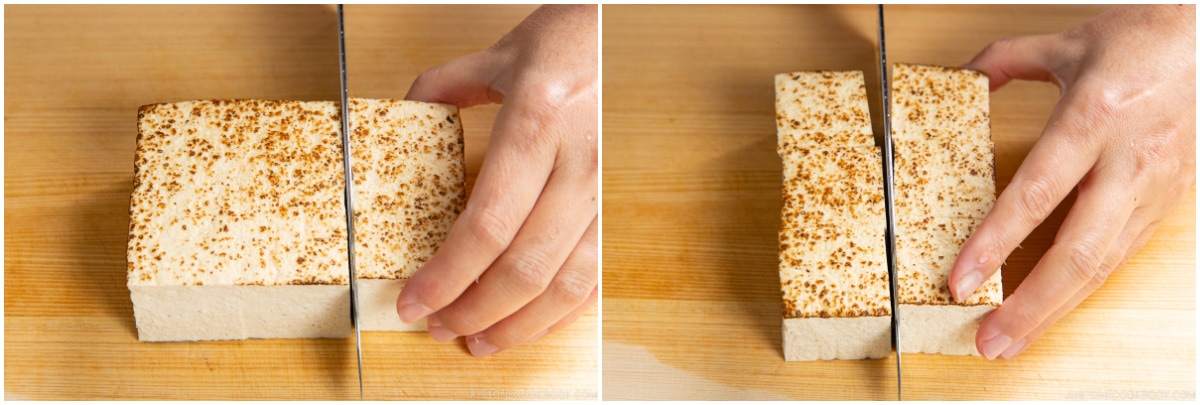
- If you‘d like to make flower-shaped carrots (optional), first slice 1½ inches carrot into ¼-inch (6 mm) rounds.
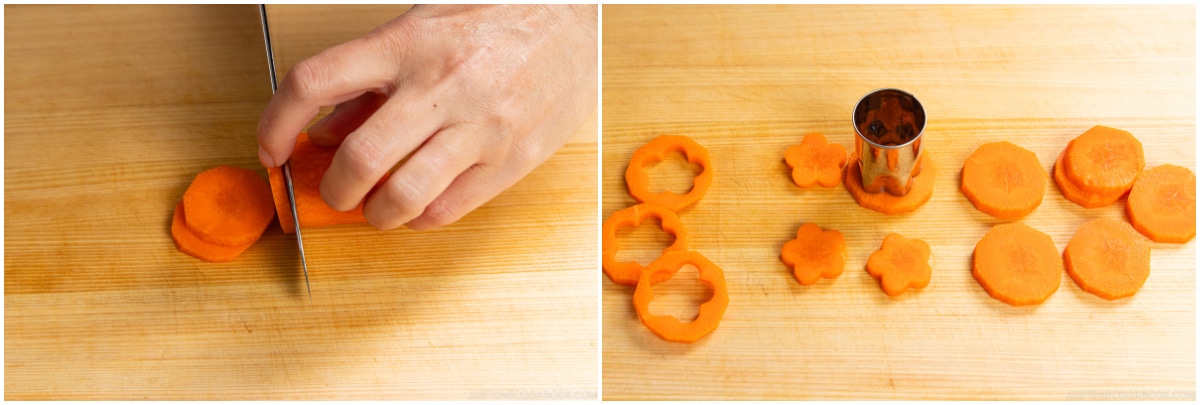
- Here, I stamp the carrot coins with a vegetable cutter into a floral shape for decoration.
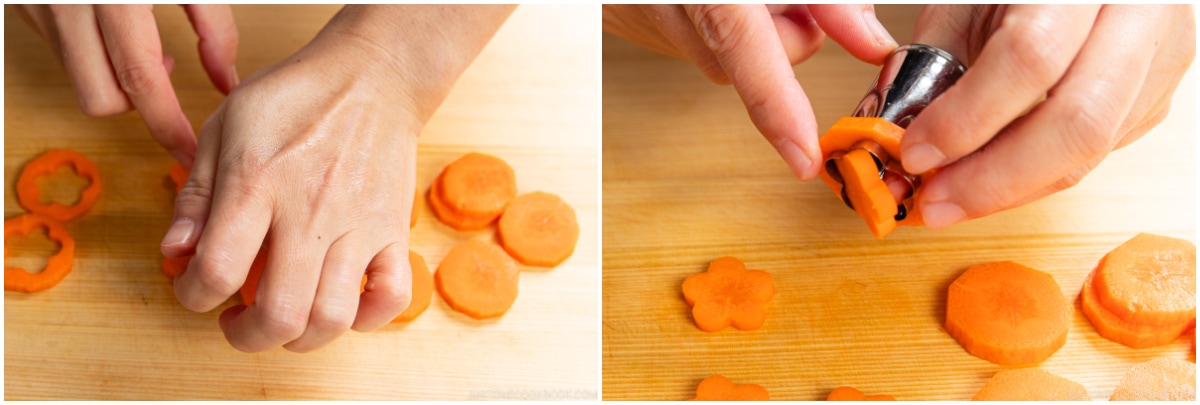
- Rinse and drain ½ package shirataki noodles. Cut the noodles in half. Add the shirataki noodles to boiling water to remove any odor. Once the water is boiling again, cook for 2 minutes, drain, and set aside.
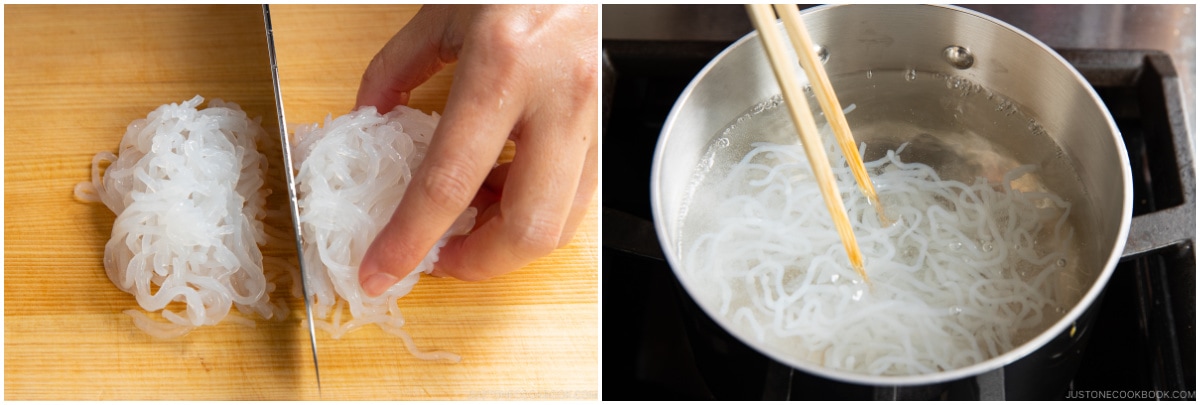
- Place ½ lb thinly sliced beef (such as ribeye) and suet (if using) on a plate. Put all the ingredients on a big platter or bamboo tray for the dining table. I prepared my eggs sous vide (read the blog post) for dipping the cooked sukiyaki ingredients. I also cooked and drained 1 serving udon noodles and set them aside for the final course.
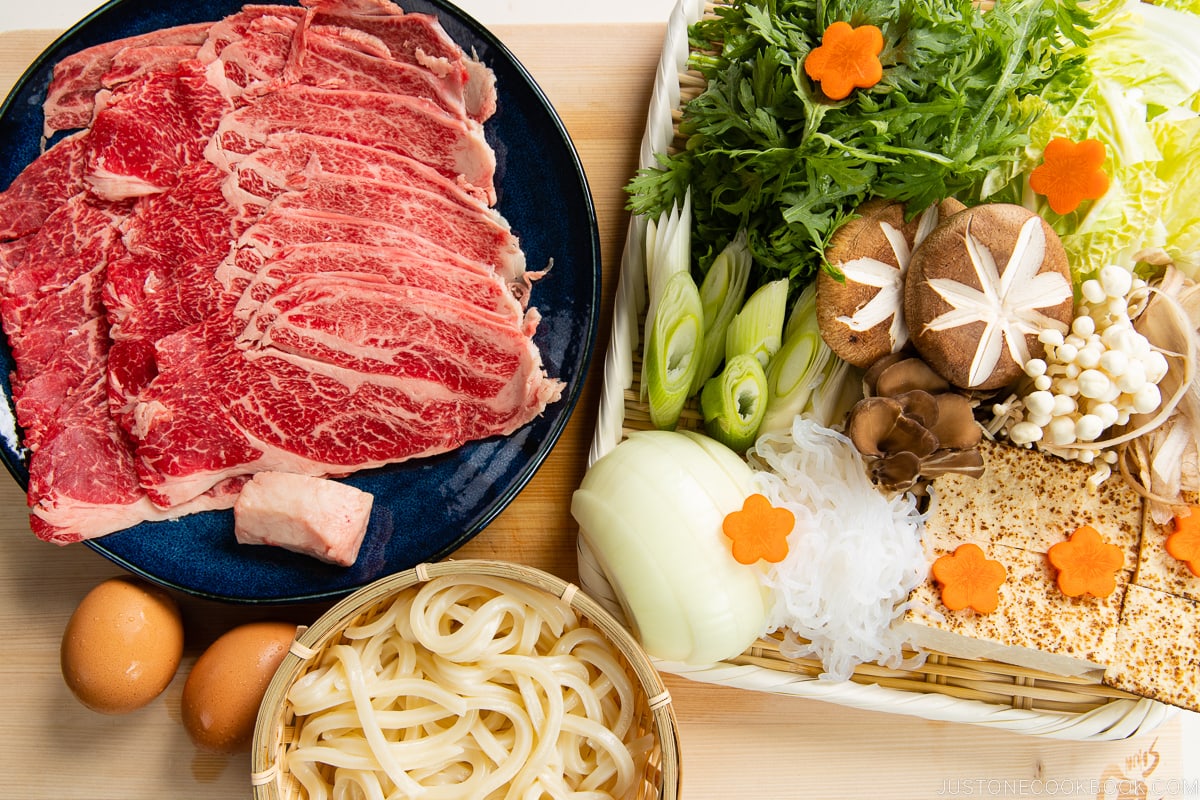
To Cook the Beef
- Set a portable gas cooktop at the dining table. I use this cast-iron sukiyaki pot that I got from MTC Kitchen (use JOC10 for 10% off) and an Iwatani portable butane stove. Give each person a medium-sized bowl to put the cooked food from the pot.
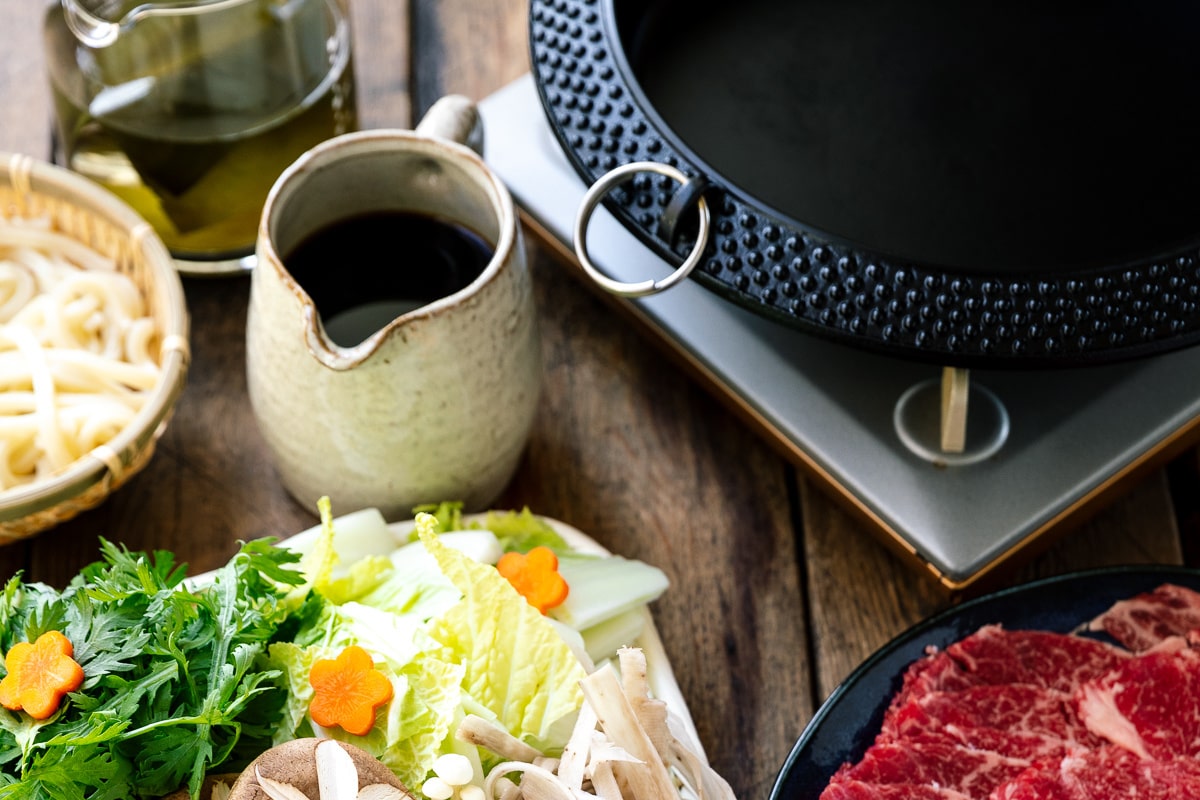
- Heat the cast-iron sukiyaki pot (or any pot) on medium heat. When it’s hot, add 1 Tbsp neutral oil (or the suet). Then, pour in barely enough sukiyaki sauce to cover the bottom of the pot, about ⅛–¼ inch of sauce.
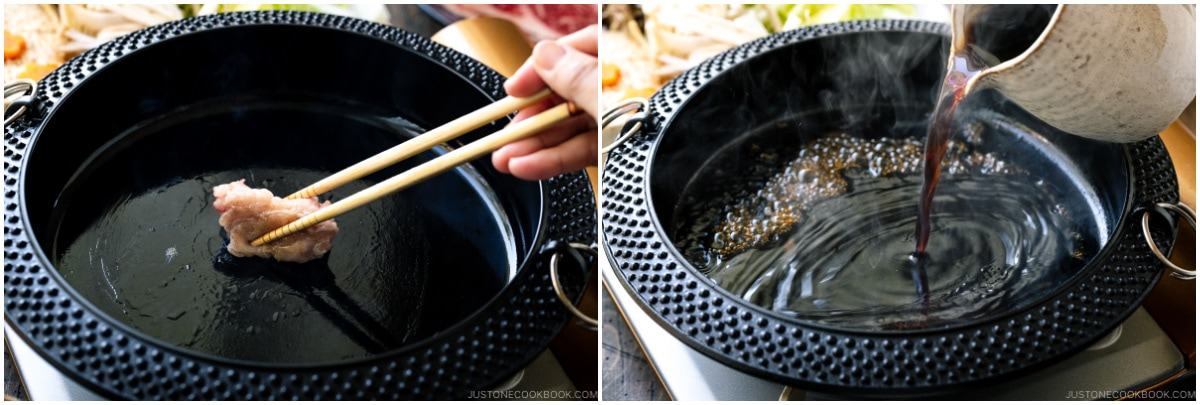
- Place a few slices of well-marbled beef in the pot. When the bottom side of the meat is cooked, flip and cook the other side. Enjoy some (or all) of the sweet and caramelized meat now to consume this good-quality beef at its best. You can eat a few rounds of meat first or leave the meat in the pot and continue to the next step.
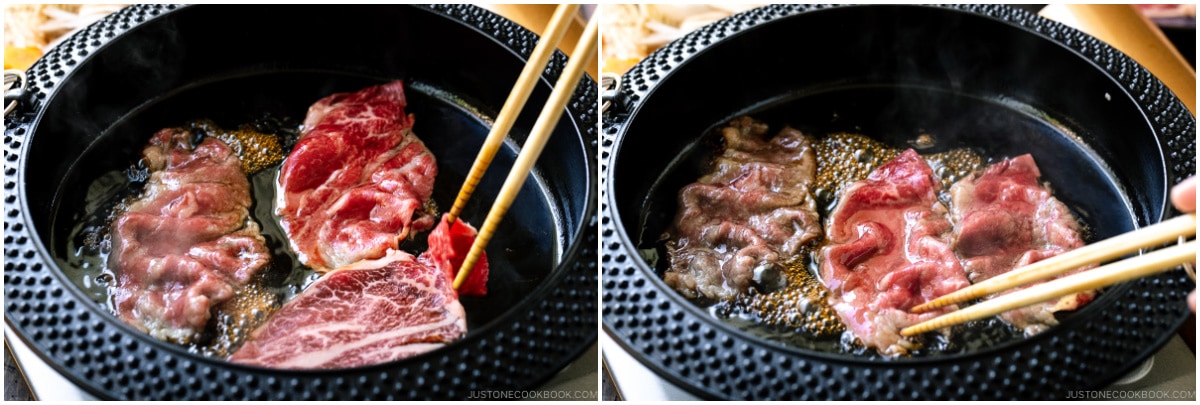
To Enjoy with Pasteurized Raw Egg (optional)
- How to Enjoy Sukiyaki in Japan: In Japan, we prepare a raw egg for each person at the table. Everyone cracks their own egg in their individual small bowl, beats it, and dips the cooked ingredients in the egg to enjoy. While raw eggs are safe to consume in Japan, US raw eggs are not recommended for consumption unless they are pasteurized. Therefore, I pasteurize my eggs using the sous vide method. When you get a chance in Japan, please try this traditional way to enjoy sukiyaki.
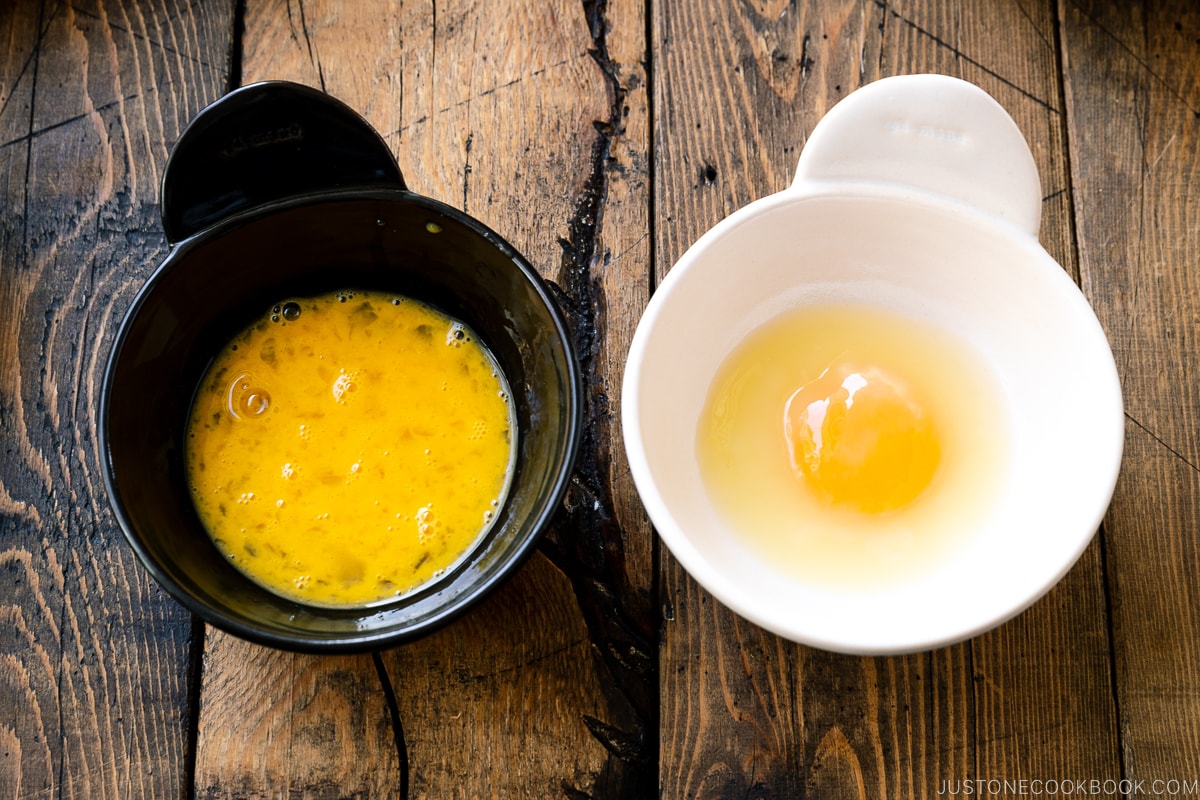
- If you are using 2 large eggs (50 g each w/o shell) that are pasteurized, dip the cooked beef in the beaten egg to enjoy. The salty and savory sukiyaki ingredients become mild and sweet after dipping in the egg. If you‘re not using eggs, drizzle in a bit of kombu dashi to dilute the sauce in the pot, to your liking; otherwise, it might taste too salty.
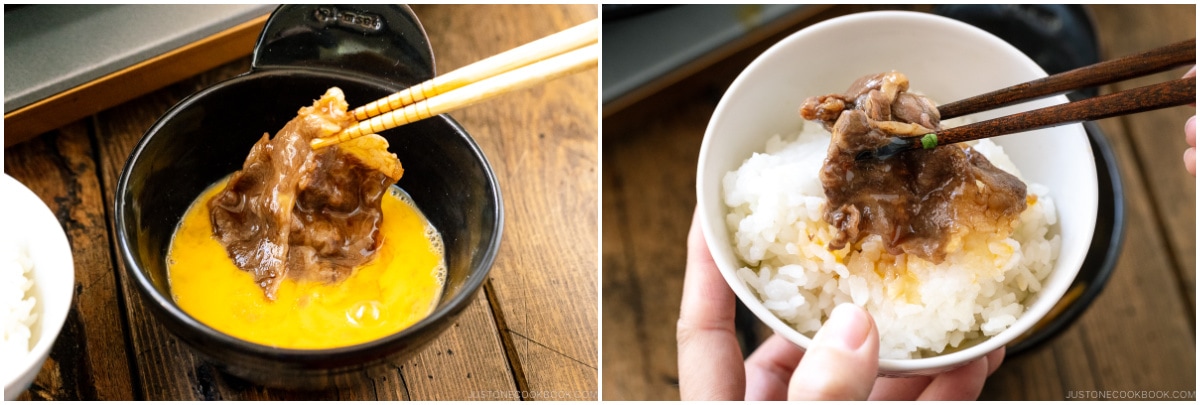
To Cook the First Round of Sukiyaki
- Add some vegetables, tofu, mushrooms, and other ingredients (except the udon) to the pot. Pour in enough sukiyaki sauce to partially submerge the ingredients in the sauce, about one-third of the way or about ¼ inch of sauce. If you aren‘t using eggs for dipping, drizzle in a small amount of kombu dashi into the pot to dilute the sauce to your liking. Bring to a gentle simmer. Then, turn down the heat and simmer until cooked through. You can add more beef now, as it cooks fast. Taste the sauce and drizzle in a tiny bit of dashi or water if it‘s getting too salty.
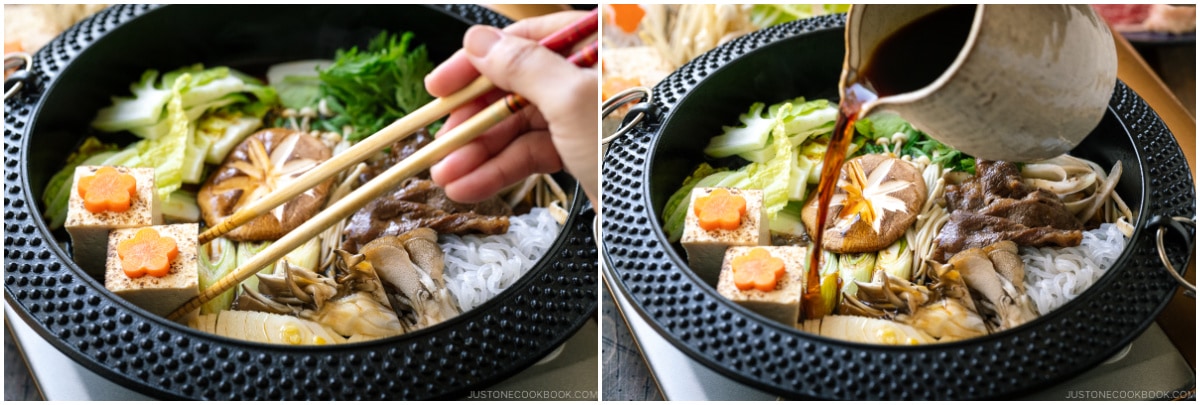
- Transfer some of the cooked ingredients to the individual bowls and enjoy the first round of sukiyaki. Taste the food and adjust the seasoning in the pot as needed; drizzle in a bit of dashi or water if it‘s too salty or add a few drops of sukiyaki sauce if it needs more seasoning. Tip: Adjusting the seasoning as you go is a normal part of cooking and enjoying Sukiyaki.
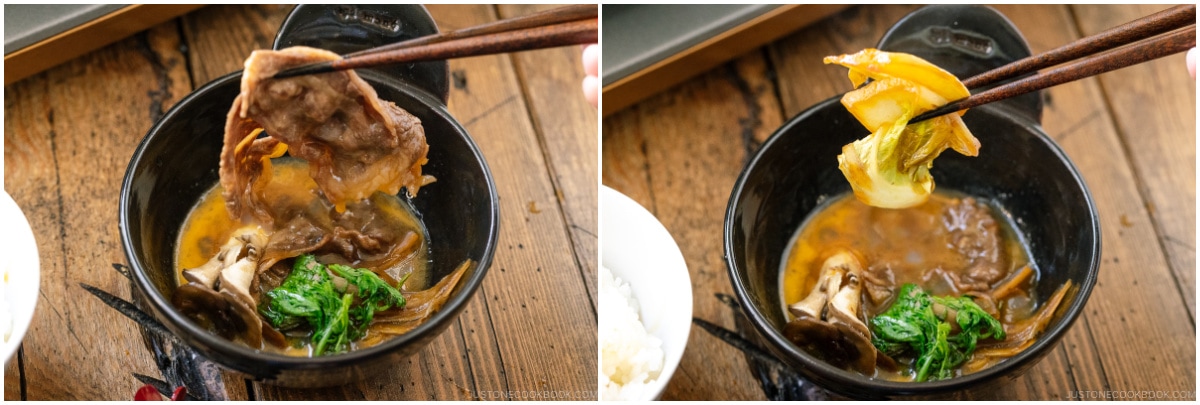
To Cook the Second and Third (Optional) Rounds
- When there is less cooked food in the pot, portion what‘s left into the individual bowls. Then, start cooking the second round by adding more ingredients to the pot (repeat the previous step). While it's cooking, you can continue to eat the rest of the first round of sukiyaki or any side dishes. Eventually, you can cook a third round to finish any remaining uncooked ingredients. Tip: Continue to adjust the broth seasoning. If your sukiyaki sauce runs out, add soy sauce and sugar to the broth in a pinch. If your dashi runs out, use water instead.
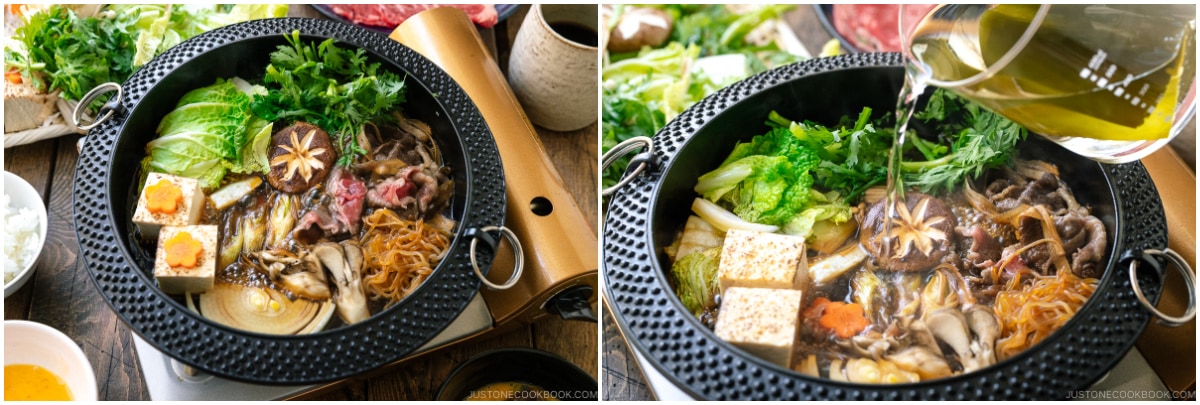
To Enjoy the Finishing Course (Shime)
- We usually end the sukiyaki meal with a final course (shime) of udon. When most of the ingredients have disappeared, add the cooked udon noodles to the remaining broth in the sukiyaki pot. Heat through and enjoy.
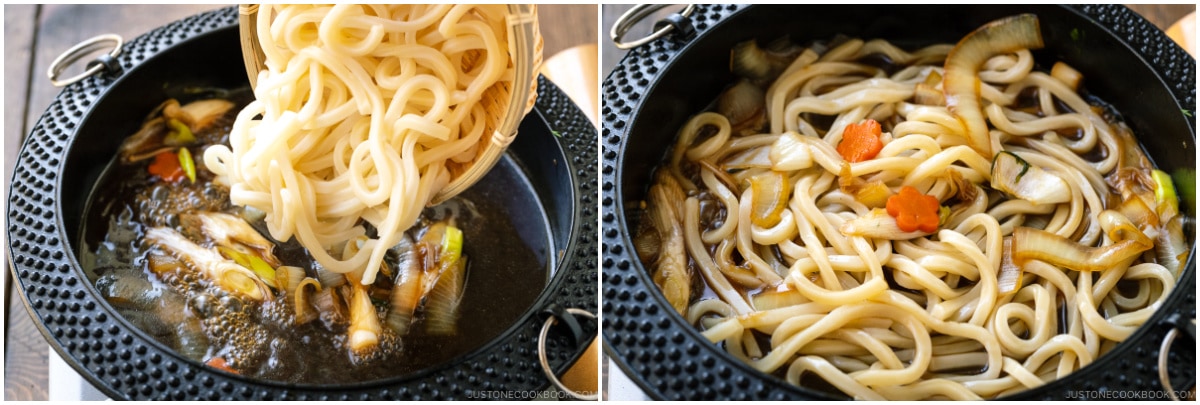
To Store
- You can keep the Sukiyaki leftovers in an airtight container and store in the refrigerator for up to 3 days or in the freezer for a month. Tofu does not freeze well, so remove it before freezing. Store leftover kombu dashi in a bottle or airtight container in the refrigerator for 4–5 days (and use it for Miso Soup) or in the freezer for 2 weeks. Store leftover sukiyaki sauce in an airtight container in the refrigerator for up to a month.
Notes
Nutrition
Calories: 767kcal, Carbohydrates: 61g, Protein: 50g, Fat: 31g, Saturated Fat: 10g, Polyunsaturated Fat: 7g, Monounsaturated Fat: 12g, Trans Fat: 0.1g, Cholesterol: 255mg, Sodium: 1314mg, Potassium: 1668mg, Fiber: 10g, Sugar: 18g, Vitamin A: 1258IU, Vitamin C: 64mg, Calcium: 317mg, Iron: 7mg